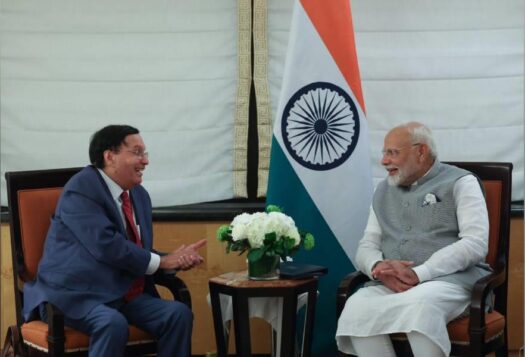
What makes Nuclear South Asia: A Guide to India, Pakistan, and the Bomb a complete package are the four pillars on which the course is structured. The first and second pillars are views and analyses by Indian and Pakistani scholars and strategists explaining the rationales that led the respective nations to embark on a nuclear program and the trajectory these programs are taking in the form of weapon development, diversification, and delivery systems. Third is the contribution by Western scholars like Dr. Scott Sagan and Dr. George Perkovich who go one step further to give a theoretical understanding of the causal variables that prompted South Asia to go nuclear. The fourth pillar is the indispensable presence of Michael Krepon and Dr. Sameer Lalwani who put forth the most critical and humane perspectives as well as effectively highlight growing nuclear dangers on the Subcontinent.
Being trained in both theoretical and operational aspects of nuclear issues, I had come to believe that discourse about “nuclear South Asia” was banal. However, besides being informative, the underlying message of the course is to sensitize us to their destructive potential. The fundamental point Krepon raises in Lesson 1.2 is that deterrence models by brainy American strategists including Bernard Brodie, Thomas Schelling, and Robert McNamara are indeed engaging, but at the same time completely delinked from actual crisis situations where rationality might cease to prevail. When a crisis emerges, it is hard to argue whether these seemingly responsible nuclear actors would employ responsible strategies that avoid escalation dangers. As an example, the Stanislav Petrov affair of 1983 shall continue to haunt humanity as it was sheer instinct that saved Petrov from making the drastic decision that would have led to a lethal nuclear confrontation.
What reaffirms my views is Lesson 5.8 discussing the lessons learned from the 1999 Kargil War in which Krepon talks about the ossification of the status-quo after the Kargil conflict. While Pakistan attempted to alter the status quo with the Kargil crisis, India too has been attempting unsuccessfully to alter it in in its favor. After Pakistan found the tactical nuclear weapons (TNWs) solution in response to Cold Start, India’s renewed attempt to deter Pakistan with the recent narrative of surgical strikes has not shown much success either. Localized strikes on launch pads across the border has been portrayed as a strong psychological deterrent (arguably an alternative to Cold Start, thereby escaping TNWs), but it has only opened the door to more intensified sub-conventional warfare and cross-border infiltration in the Kashmir Valley.
The course is a precise package for any student who wishes to acquire a sound understanding of “nuclear South Asia.” Yet, I disagree with Neil Joeck’s favoring of India’s civilian-led nuclear command-and-control (C2) structure as “responsible” and terming the Pakistani counterpart, which is controlled by the Pakistani Army, as being relatively unpredictable (Lesson 3.8). On closer analysis, one finds that the Strategic Plans Division (SPD) consists of experts familiarized and socialized well with the doctrinal aspects as well as the science of the Bomb and delivery systems. The Indian Nuclear Command Authority, by contrast, is not as well versed in nuclear issues because it consists of military officers from a regular forces background and bureaucrats without nuclear expertise. The recent episode involving a sitting defense minister questioning India’s no-first-use doctrine and his subsequent resignation raised eyebrows regarding the authority and seriousness with which India’s civilian leadership approaches nuclear debates. I hope the Stimson team will explore these issues in future lectures.
*****
Editor’s note: “Nuclear South Asia: A Guide to India, Pakistan, and the Bomb” is a free, open online course produced by the South Asia Program at the Stimson Center. The course, part of the Stimson Center’s Nuclear Learning initiative, provides the emerging generation of strategic analysts in India, Pakistan, and elsewhere a platform to study nuclear competition and dangers on the Subcontinent. It includes video interviews with more than 80 leading practitioners and scholars from India, Pakistan, and the United States, including former senior diplomats and military officers. In this series, SAV contributors Muhammad Daim Fazil, Prateek Joshi, Sitara Noor, and Monish Tourangbam reviewed the course and assessed its educational utility. Read the entire series here. To enroll in the course, visit nuclearlearning.org, and for further engagement, follow the Nuclear Learning Facebook and Twitter pages and subscribe to our YouTube channel.
Click here to read this article in Urdu
*****


